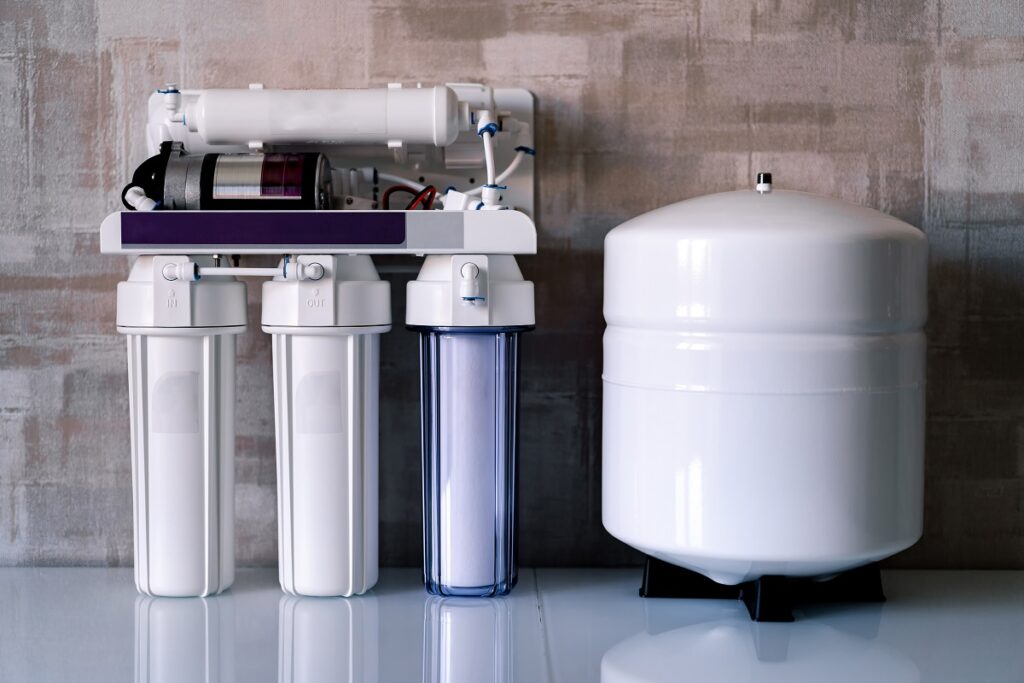Access to clean, safe drinking water is essential for health and well-being. With increasing concerns about water quality, investing in a home water purification system has become more important than ever. But with so many options available, how do you choose the best one for your needs? In this guide, we’ll explore the top home water purification systems, helping you find the perfect fit for ensuring your water is pure and healthy.
Why You Need a Home Water Purification System
Before diving into the specifics of various systems, it’s crucial to understand why a home water purification system is necessary.
Health Concerns
Tap water can contain a range of contaminants, including bacteria, viruses, chemicals, and heavy metals. While municipal water treatment facilities do their best to ensure water is safe, various factors such as aging infrastructure and local pollution can affect water quality. A purification system can help eliminate these contaminants, providing peace of mind about the safety of your drinking water.
Improved Taste and Odor
Many people find that tap water can have an unpleasant taste or odor due to chlorine, sediment, or other impurities. A good water purification system not only makes your water safer but also improves its taste and smell, making it more enjoyable to drink.
Cost Savings
While there’s an upfront investment in a water purification system, it can save you money in the long run by reducing the need to purchase bottled water. It also helps protect your appliances and plumbing from scale and sediment build-up, potentially extending their lifespan.
Types of Home Water Purification Systems
There are several types of home water purification systems, each with its own advantages and suitable applications. Here’s an overview of the most popular options:
1. Reverse Osmosis Systems
Reverse osmosis (RO) systems are among the most effective water purification methods. They use a semi-permeable membrane to remove a wide range of contaminants, including dissolved solids, bacteria, and chemicals.
How It Works
RO systems force water through a membrane that filters out impurities. The purified water is collected in a storage tank, while the contaminants are flushed away. Most RO systems also include additional filters, such as activated carbon, to enhance the purification process.
Pros
- Highly Effective: Removes a broad spectrum of contaminants.
- Improves Taste and Odor: Enhances water quality significantly.
- Low Maintenance: Requires periodic filter changes.
Cons
- Wastes Water: RO systems can waste a significant amount of water during the filtration process.
- Slow Flow Rate: The purification process can be slower compared to other systems.
2. Activated Carbon Filters
Activated carbon filters are one of the most common and affordable water purification methods. They use activated carbon to adsorb impurities, such as chlorine, sediment, and volatile organic compounds (VOCs).
How It Works
Water passes through a filter containing activated carbon, which traps contaminants on its surface. This method is effective at improving taste and odor but is less effective at removing dissolved solids and heavy metals.
Pros
- Improves Taste and Smell: Effective at removing chlorine and other impurities that affect water taste.
- Affordable: Generally less expensive than other purification systems.
- Easy Installation: Can be installed as countertop filters or under-sink units.
Cons
- Limited Contaminant Removal: May not remove all types of contaminants, such as heavy metals and dissolved solids.
- Requires Regular Replacement: Carbon filters need to be replaced periodically to maintain effectiveness.
3. Ultraviolet (UV) Purifiers
UV purifiers use ultraviolet light to disinfect water by destroying harmful microorganisms such as bacteria, viruses, and protozoa.
How It Works
Water flows through a chamber where it is exposed to UV light. The UV rays penetrate the cells of microorganisms, rendering them unable to reproduce and causing them to die. UV purifiers are effective at killing pathogens but do not remove chemical contaminants or sediments.
Pros
- Effective Disinfection: Highly effective at killing bacteria and viruses.
- No Chemicals: Does not introduce chemicals into the water.
- Low Maintenance: Requires minimal maintenance aside from occasional bulb replacement.
Cons
- No Chemical Removal: Does not remove chemicals, heavy metals, or sediment.
- Requires Power: Needs electricity to operate.
4. Water Distillers
Water distillers purify water through the process of boiling and condensation. They remove contaminants by evaporating water and then condensing it back into a liquid, leaving impurities behind.
How It Works
Water is heated to its boiling point, and the steam is collected and condensed back into liquid form. The impurities, including bacteria, minerals, and chemicals, are left behind in the boiling chamber.
Pros
- Highly Effective: Removes a wide range of contaminants, including minerals and heavy metals.
- No Chemical Additives: Pure water with no added chemicals.
Cons
- Slow Process: Distillation can be slow compared to other methods.
- Energy Intensive: Requires a significant amount of energy to heat the water.
Choosing the Right System for Your Needs
Selecting the best water purification system depends on various factors, including your water quality, budget, and specific needs. Here are some tips to help you make an informed decision:
Assess Your Water Quality
Start by testing your water to determine the contaminants present. This will help you choose a system that addresses your specific water quality issues. Many home improvement stores offer water testing kits, or you can hire a professional to conduct a comprehensive analysis.
Consider Your Budget
Evaluate the cost of the system, including installation and maintenance. While some systems have a higher upfront cost, they may offer better long-term value. Factor in ongoing costs such as filter replacements or energy consumption.
Think About Maintenance
Different systems require varying levels of maintenance. Consider how much time and effort you’re willing to invest in maintaining the system. Some systems, like RO units, need regular filter changes, while others, like UV purifiers, require occasional bulb replacements.
Installation and Space
Consider the space available for installing the system. Some units, like under-sink RO systems, require dedicated space, while others, like countertop filters, are more compact. Ensure that the installation process fits your home’s layout and plumbing setup.
Conclusion
A home water purification system is an investment in your health and quality of life. By understanding the different types of systems and their benefits, you can make an informed decision that meets your specific needs. Whether you choose a reverse osmosis system for its comprehensive filtration, an activated carbon filter for its affordability, a UV purifier for its effective disinfection, or a distiller for its purity, each system offers unique advantages.
By evaluating your water quality, budget, maintenance preferences, and installation needs, you can find the best water purification system to ensure that your home has access to clean, safe, and great-tasting water.







